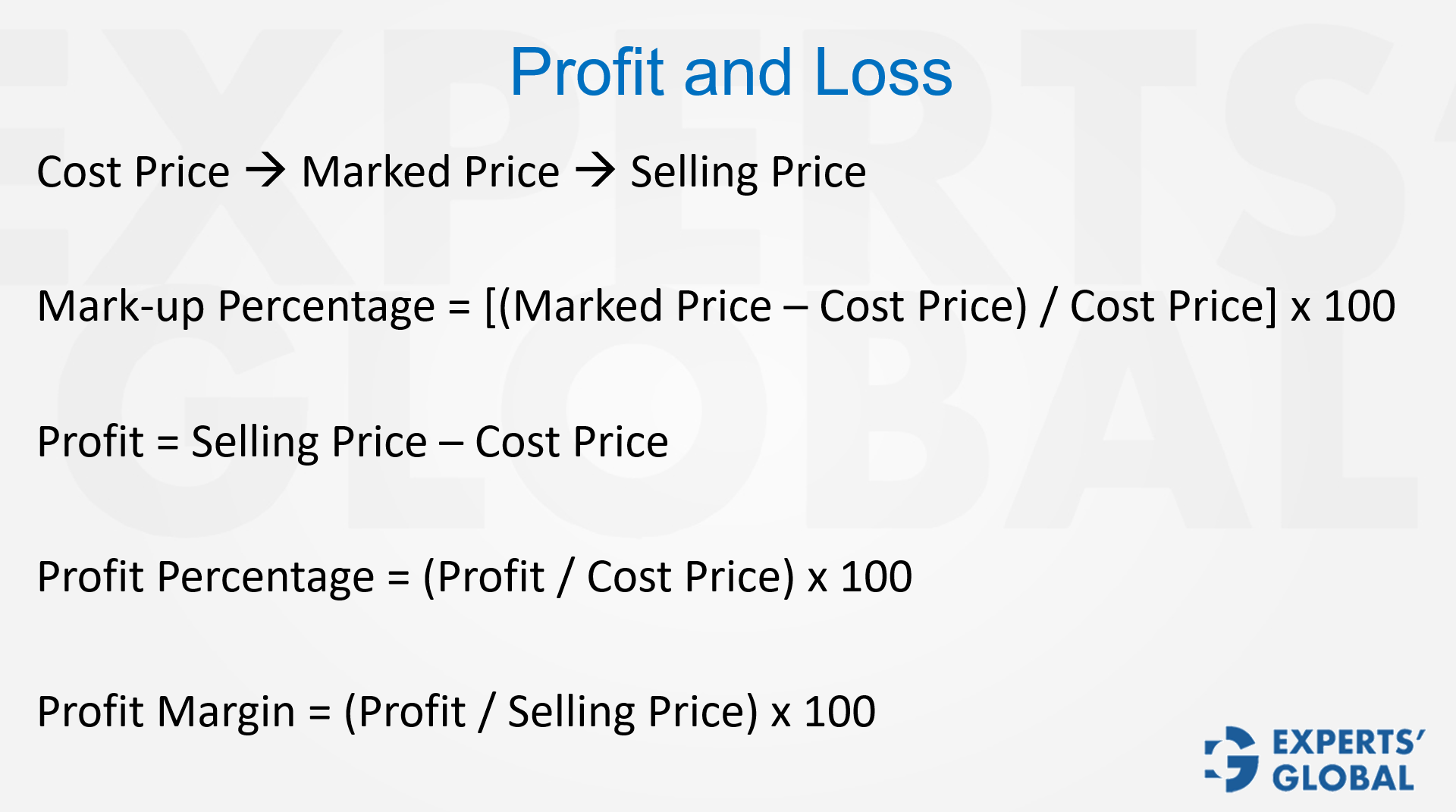Invest 30 seconds...
...for what may lead to a life altering association!
Help Line
- +91.8800.2828.00 (IND)
- 1030-1830 Hrs IST, Mon-Sat
- support@expertsglobal.com
...for what may lead to a life altering association!


GMAT Profit and Loss Basics: cost price is price to the seller; marked price is listed price; discount is a % of marked price; profit = selling price − cost price; profit % = profit ÷ cost price; profit margin = profit ÷ selling price.
Profit and loss questions during GMAT prep often create confusion because of the subtle differences between terms like cost price, marked price, selling price, profit percentage, and profit margin. At first glance, they may appear similar, but the distinction between them is crucial. The cost price is the actual cost incurred by the seller, while the marked price is the price displayed on the product. However, the selling price is what the buyer ultimately pays. Mark-up percentage is calculated on the cost price, while discounts are applied to the marked price, and profit is always based on the difference between selling price and cost price. A common mistake is to confuse profit percentage with profit margin. Profit percentage uses cost price as the base, while margin uses selling price. Getting this distinction right is essential for mastering GMAT preparation and for building accuracy through GMAT mocks.

The value chain of pricing involves three terms: cost price, marked price, and selling price. The cost price is what the seller pays to procure the item. The marked price is the price listed on the product. The selling price is the actual price at which the product is sold to the customer.

Mark-up is calculated as [(marked price – cost price) ÷ cost price] × 100.
For example, if the cost price is $100 and the marked price is $150, the mark-up is 50 percent.
Profit, however, is based on selling price: Profit = Selling Price – Cost Price.
Question: A shopkeeper marks up by 100%, and gives two successive discounts of 10% and 20%. What is his percentage profit?
Let the cost price be 100.
Mark up by 100% → Marked Price = 200.
Apply 10% discount → 200 × 0.90 = 180.
Apply 20% discount → 180 × 0.80 = 144.
Profit = 144 − 100 = 44.
Percentage profit = 44 ÷ 100 × 100 = 44%.
Profit percentage is (Profit ÷ Cost Price) × 100,
while profit margin is (Profit ÷ Selling Price) × 100.
For example,
If cost price is $50 and selling price is $200, the profit is $150.
The profit percentage is $150 ÷ $50 = 300 percent,
But the margin is $150 ÷ $200 = 75 percent.
The difference between profit percentage and margin often decides whether you solve a question correctly under exam pressure. By learning to keep the base in mind, you can quickly eliminate errors. Regularly practicing such examples helps you strengthen this clarity and avoid common traps in calculation.
Beginning MBA admission consulting while you prepare for the GMAT is a practical planning choice for many candidates. An early start lets us coordinate test strategy and applications on a single timeline. At onboarding, we study your background and suggest focused profile enhancements that take limited time yet add substance. As you work on the GMAT, we build schedules, organize documents, and refine the school list. Progress runs on two tracks: rising test readiness and a stronger narrative. This approach preserves study time and still leaves you ready to finalize applications within two weeks of completing the test.